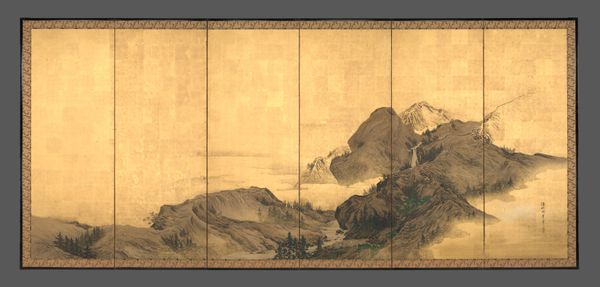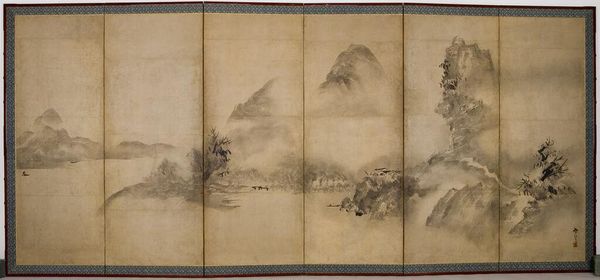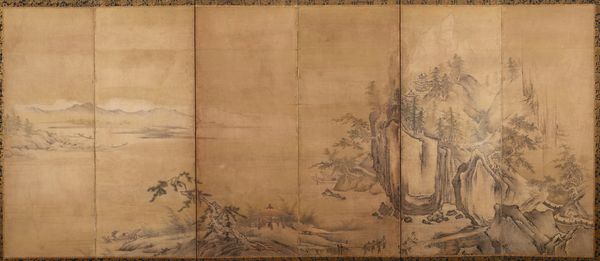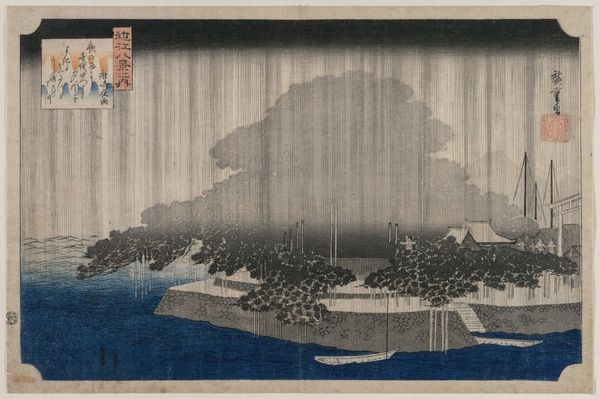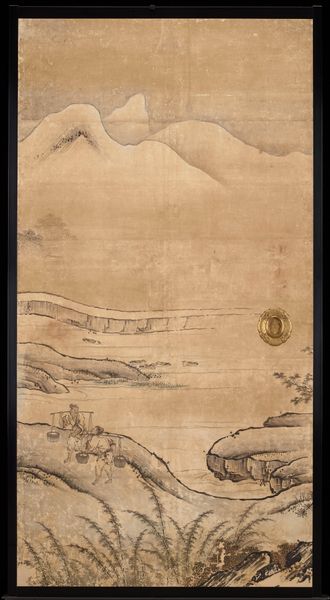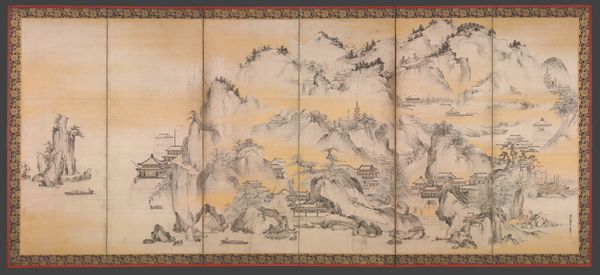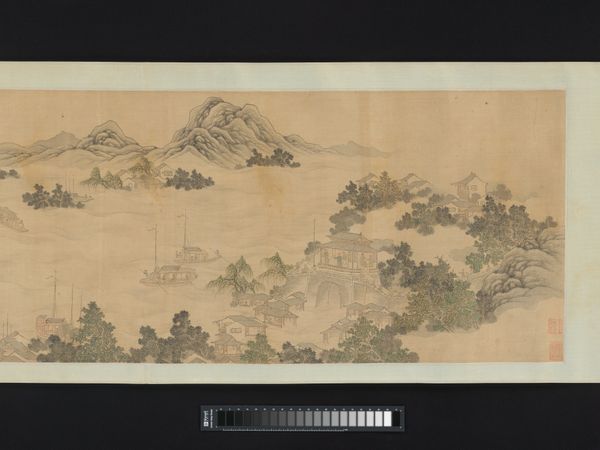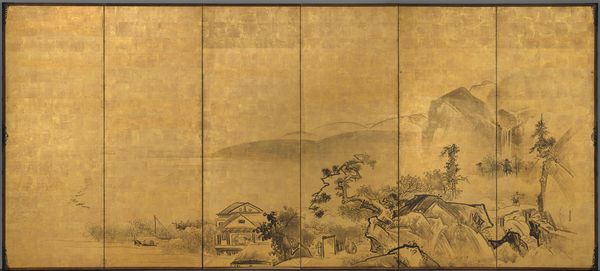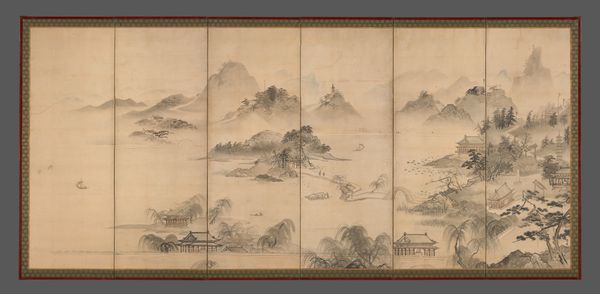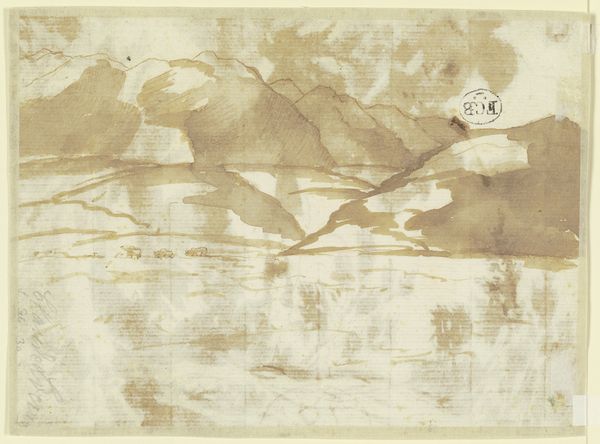
Scenes from the Eight Views of the Xiao and Xiang Rivers 17th century
0:00
0:00
tempera, painting
#
tree
#
tempera
#
painting
#
asian-art
#
landscape
#
ukiyo-e
#
mountain
#
orientalism
#
watercolor
#
yamato-e
Dimensions: Overall (each screen): 67 1/2 x 147 in. (171.5 x 373.4 cm)
Copyright: Public Domain
Editor: This is "Scenes from the Eight Views of the Xiao and Xiang Rivers" by Unkoku Tōteki, likely from the 17th century. It appears to be tempera on a six-panel screen. The landscape has a serene yet otherworldly feeling, especially with the shimmering gold leaf. How do you interpret this piece within its historical context? Curator: That shimmer is crucial! The application of gold leaf wasn’t merely decorative. In 17th-century Japan, the patronage of powerful figures like the Tokugawa shogunate influenced artistic production. The luxurious materials speak to wealth and status. It's a statement, really. What do you think this says about landscape painting’s role then? Editor: I guess it moves landscape painting beyond just depicting nature. It's about demonstrating power through possessing idealized views? Like claiming ownership of the landscape itself? Curator: Precisely! These “Eight Views” became a codified subject, linked to Chinese literati traditions adopted by the Japanese elite. The subtle ink washes contrasting with the brilliant gold create a tension. Was this tension aesthetic, or did it mirror social hierarchies? Think about who could afford this. Editor: So it was both aesthetic and political. The limited color palette makes it feel very exclusive too. It feels interesting knowing that the piece acted as propaganda by conveying status. Curator: Indeed. Now, consider where this would have been displayed. Not just in any home, but in spaces designed for specific rituals and social interactions. Its function shaped its form and imagery. Did knowing more about the function of display spaces help shape your understanding of the artwork? Editor: Yes, it really shifts my perspective! Seeing it as part of a larger environment changes how I understand its purpose and message. It's not just a pretty picture. Thanks! Curator: And thank you! Considering art as a product of social and political forces unlocks a deeper appreciation for its historical weight and resonance.
Comments
No comments
Be the first to comment and join the conversation on the ultimate creative platform.
